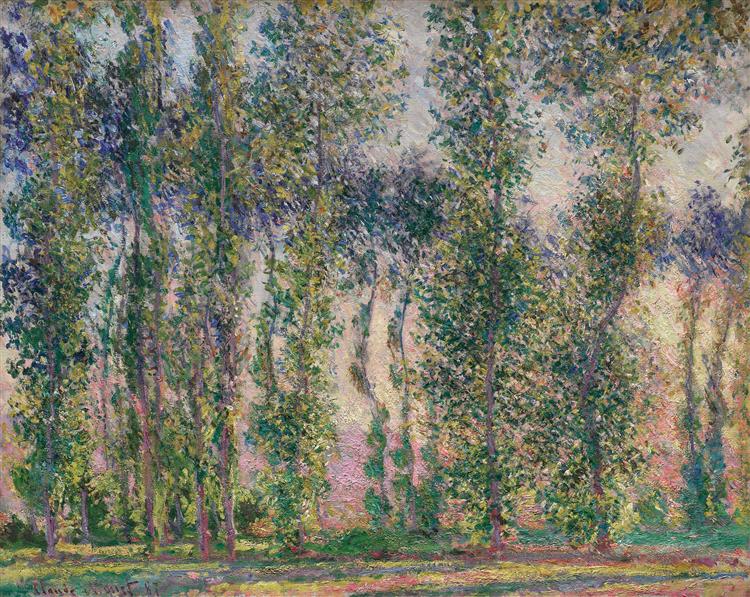Description
In the work "Alamos in Giverny" by Claude Monet, painted in 1887, a moment of sublime contemplation of nature that encapsulates the essence of impressionism is revealed. This painting, which is part of the series of works that Monet made in his garden and in the surroundings of his home in Giverny, presents a rich understanding of the effects of light and atmosphere, two key elements in his art. Before the viewer's gaze, a group of poplars rises erect in the foreground, while the soft murmur of a pale blue sky and spongy clouds offers a charming contrast with the green and gold of the leaves.
Monet uses a vibrant and luminous palette that transmits the transience of sunlight when filtering through the treetops. Green tones fluctuate from deep emerald in shadows to yellow and gold that give life to illuminated leaves. This variation of colors not only provides a sense of depth and texture, but also suggests the changing rhythm of nature, a central theme in the practice of master impressionistic.
The composition is simple, but effective. The poplars, grouped in a vertical order, guide the viewer to the sky, creating a visual bridge that invites the exploration of space and the atmosphere. This way of establishing visual hierarchies is characteristic in the work of Monet, who struggled to capture not only the image but also the sensation and effect of what is represented. In this work, the absence of human figures reveals the full attention of the artist towards nature itself, devoid of distractions or narratives, speaking in his visual language to communicate a pure and direct experience.
It is remarkable to consider that "Alamos in Giverny" is part of a broader group of works that Monet carried out in the same period, focused on the same poplars. This repetitive and almost obsessive approach in the representation of the same subject is a distinctive feature of impressionism, which, through variation in light and atmosphere, reveals multiple states of the same object. Monet firmly believed that a painting He had to capture an ephemeral moment, the visual impression that is perceived at a specific time. The work, then, not only portrays a landscape, but becomes a visual exploration of perception, light and time.
In summary, "Alamos in Giverny" is a work that embraces the impressionist philosophy with an almost poetic approach to the natural. MONET's meticulous attention for the effects of light and its ability to capture the essence of a moment in nature make this painting a testimony of the artistic ingenuity of one of the greatest masters of painting. Through his work, Monet not only presents us with a landscape, but invites us to experience nature in his purest and emotional state, an invitation that transcends time and continues to resonate in contemporary sensitivity towards the natural world.
KUADROS ©, a famous paint on your wall.
Hand-made oil painting reproductions, with the quality of professional artists and the distinctive seal of KUADROS ©.
Reproduction service paintings With a guarantee of satisfaction. If you are not completely satisfied with the replica of your painting, we refund your money 100%.

